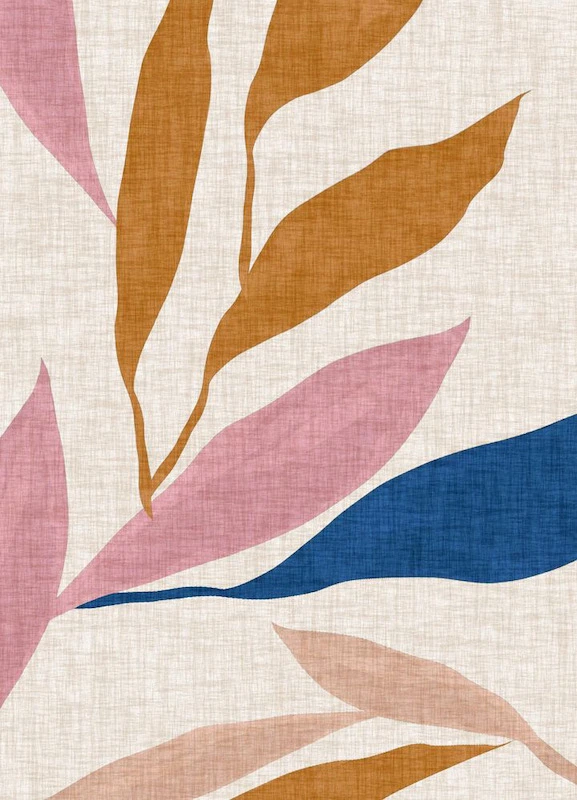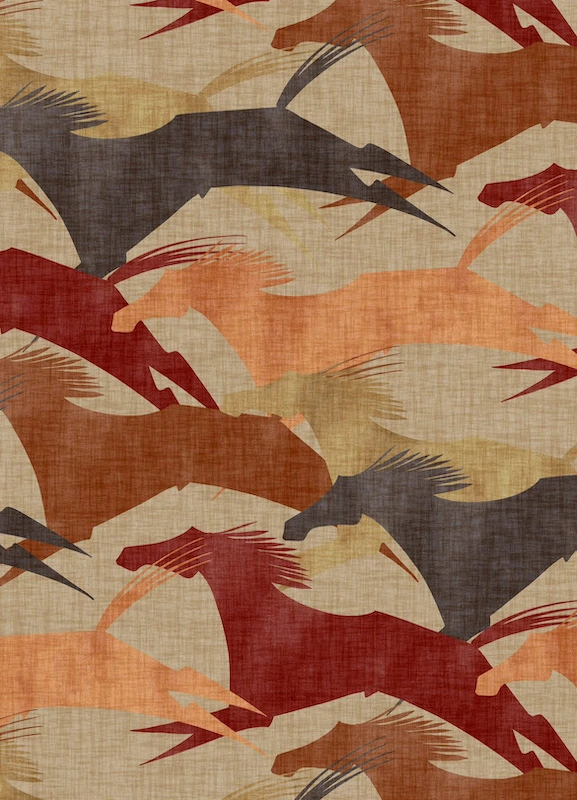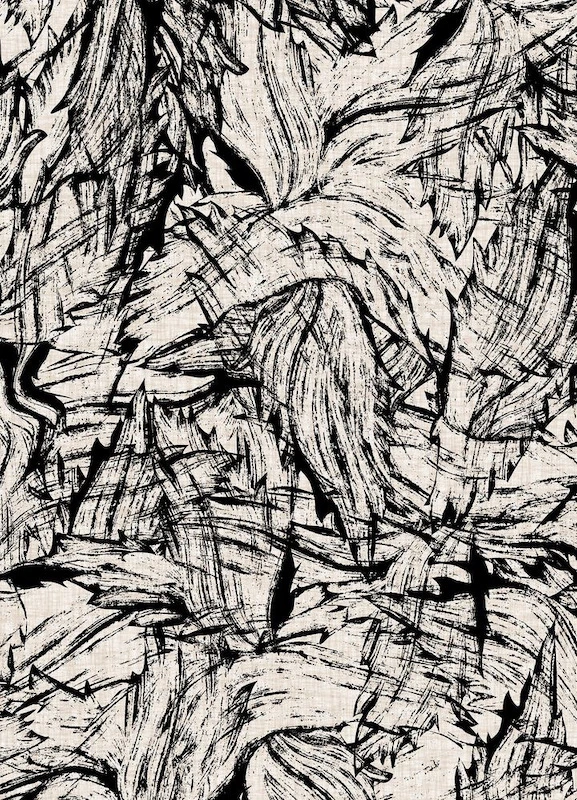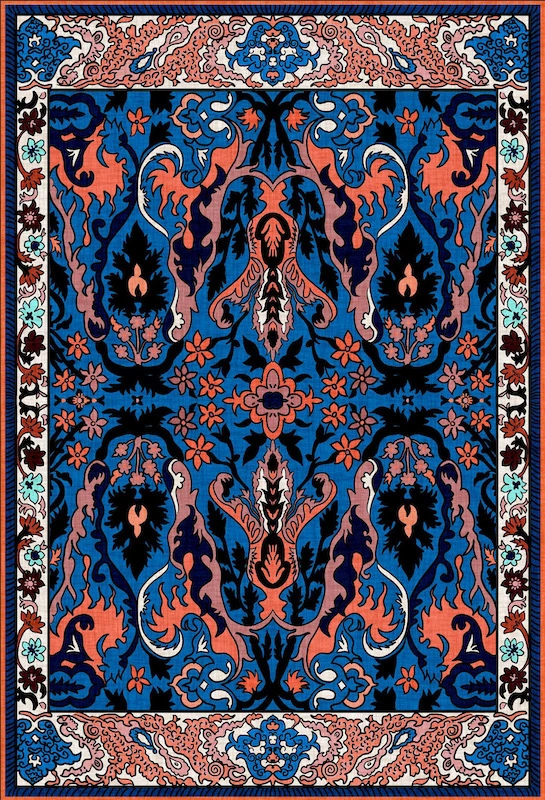Kohan Textile Journal is honored to present an exclusive interview with Atena Neuhuber, a distinguished figure in the realms of textile and product design. Her impressive educational background, comprising a Bachelor’s and Master’s degree in Design from Linz University of Arts in Austria, is complemented by a rich tapestry of experiences.
Atena Neuhuber’s career has been distinguished by her work as a manager responsible for design in numerous foreign fashion and textile brands, and her role as the exclusive designer for over 300 foreign brands worldwide. Notably, she is also the creator of the AQUI TREND PATTERNPRINTS books. Residing in Austria, her active presence and constant engagement in the fashion design market makes her a valuable reference for aspiring designers.

What key steps must aspiring individuals, particularly students, take to transition into proficient and skilled textile designers within the industry?
Steps to Become a Proficient Designer
In any profession, experience and unwavering dedication, fueled by a genuine passion, form the cornerstone of success. For those aspiring to excel in the fashion and design industry, the following ten steps are essential:
- Grasping fundamental concepts and principles
- Attaining proficiency in clothing design and aesthetics
- Gaining practical work experience and fostering valuable industry connections
- Observing and studying at an expansive level
- Curating a comprehensive portfolio of work
- Developing proficiency in the use of design software
- Building a professional network and conducting thorough market research
- Cultivating a distinctive personal style
- Staying attuned to industry trends and engaging in continuous market analysis
- Harmonizing personal interests with the evolving needs and desires of consumers
How can designers effectively reconcile their creative vision with the market demands to ensure that their designs resonate with consumers and achieve commercial success?
Aligning Creative Vision with Market Demands
The process of crafting a design that is both technically and aesthetically outstanding while resonating with the market and achieving commercial success is a critical and often challenging aspect of our profession. Designers can navigate this delicate balance by focusing on key factors:
- Thorough market analysis and a deep understanding of customer preferences
- Meticulous selection of high-quality materials and fabrics with appropriate design
- Effective communication and marketing strategies
- A competitive mindset with the goal of optimizing sales
- Adaptability to the dynamic nature of fashion trends and seasonal shifts
- Creativity in harmonizing the designer’s personal inclinations with the needs and desires of their clientele

What is your assessment of the European market’s preferences concerning machine-made carpets and modern designs?
European Market Preferences in Machine-Made Carpets and Modern Designs
Carpets play a pivotal role in interior decoration, serving as a reflection of culture and art in European homes. Selecting the appropriate carpet is integral to enhancing the ambiance and cultural essence of a space.
While minimalist designs have garnered substantial popularity in modern homes, extensive efforts are invested in continually innovating these designs to align with the evolving tastes of the market.
The carpet industry in Europe is led by four prominent countries:
France, celebrated for its original artistic carpets featuring modern designs, notably in the city of Paris, where design draws inspiration from the visual arts.
The Netherlands, with a preference for rugs characterized by geometric patterns and crafted from wool and cotton.
England, particularly in the cities of Manchester and Glasgow, excelling in the production of both modern and classic carpets.
Portugal, known for its use of high-quality fibers in carpets, boasting modern and appealing designs while favoring contemporary styles. In Scandinavian countries, minimalism is the prevailing trend, with a strong emphasis on natural fibers.
In summary, landscape and nature-inspired carpets are particularly popular in England, vintage designs find favor in America, and abstract works generally perform well in both Europe and America.
What measures can designers take to safeguard their designs from unauthorized reproduction and misuse?
Safeguarding Designer’s Creative Work
The most effective means of safeguarding one’s designs against unauthorized reproduction and misuse involve engaging in legal procedures to secure the rights to reproduce designs and models, with the guidance of experienced legal professionals.
Furthermore, establishing a robust presence within the domestic and international community contributes to the recognition and protection of intellectual property.
How can designers stay abreast of current trends and remain updated with the latest developments in the industry?
Staying Updated in the Fashion World
In the contemporary world, staying updated with the latest trends is more accessible than ever, thanks to platforms such as YouTube, Facebook, Instagram, and even artificial intelligence. Designers can further enhance their awareness through the following strategies:
- Diligently studying and following esteemed fashion magazines like Vogue, Elle, Harper’s Bazaar, and GQ
- Gaining fresh insights into fashion and design while keeping abreast of the latest textile tools and technologies
- Following fashion and trend websites such as WGSN
- Mastering the Pantone color trend knowledge
- Engaging with social media and virtual platforms, while following authentic influencers
- Participating in fashion forums and networking with experts in the field
What is your perspective on the concept of fast fashion, and what do you consider to be its advantages and disadvantages?
Perspectives on Fast Fashion
Fast fashion offers several advantages, including an extensive array of choices that cater to market needs, high-speed production, and adaptability to shifting demands. However, it also bears significant disadvantages, such as the unsustainable consumption of resources, environmental damage, compromised product quality, limitations on creative and unique designs, encouragement of over-consumption, adverse working conditions, and environmental concerns.
In my view, fast fashion represents a distinct business model that has achieved global prevalence, driven by its profitability and the wide variety of models it offers. This trend has led to reduced opportunities for exclusive and creative designers and has raised significant environmental concerns.
When is the optimal time for designers to present their designs for maximum impact, and what avenues are best suited for supplying and selling designer creations?
Ideal Times for Designers to Showcase Their Work
For spring and summer designs, the best time to showcase them is in early January and February. In contrast, autumn and winter designs should be unveiled from early July through the end of September.
Participation in essential international fabric and design exhibitions, including prestigious events like Premiere Vision and Munich Fabric Start, offers designers an exceptional platform to showcase their creations. Furthermore, for those involved in the domestic textile industry, vital exhibitions include Heimtextil and Maison&Objet.
In what ways does the process of fabric design for clothing vary from that for home textiles and other textile products?
Distinctions in Fabric Design for Different Textile Products
In the domain of fabric design, the act of “design” typically involves creating patterns and designs on the fabric. This process is often undertaken by graphic designers and is subsequently transferred onto the fabric, usually through printing or the utilization of available machine tools and technologies.
Remaining updated on the latest trends and producing new and innovative patterns is crucial in fabric design. For clothing designers, proficiency in a range of pattern-making and design software is vital. Additionally, they must possess knowledge of fabric types and materials.
In contrast, textile design for items such as carpets entails creating specific and correlated designs on the surface of the product. It does not necessitate pattern-making; rather, designs are woven manually or by machine to specific dimensions.
Certain home textiles, such as bed sheets, select pillows, tablecloths, rugs, and even wallpapers, feature printed surface designs. However, these items do not require patterns and possess specific dimensions. Surface designs on these products are frequently updated in alignment with prevailing trends.
Some designers may create designs suitable for both the fashion industry and the home textile sector.
To what extent have advancements in textile technologies, particularly in printing, contributed to the growth and evolution of the fashion industry?
Impact of Textile Technologies on the Fashion Industry
The growth of technology has significantly influenced the fashion industry in numerous ways:
Enhanced Design and Modeling: Software applications like Adobe Illustrator, Adobe Photoshop, AutoCAD, and CLO have empowered designers to virtually create and assess clothing designs before physical production.
Improved Production and Direct Manufacturing: Technologies such as 3D printing and laser cutting have expedited production while minimizing waste.
Online Retail: The proliferation of the internet and online stores has enabled nationwide and global sales, fostering the development of brands and intensifying competition.
Harnessing Artificial Intelligence: Utilizing AI for data analysis, designers can gain insights into customer preferences, informing decisions in product design, inventory management, and marketing strategies.
Smart Wearables: Innovations in wearable technology, encompassing smart watches and smart clothing, have introduced new possibilities in health tracking, wireless communication, and control over features like music.
Environmental Compatibility: Technology plays a pivotal role in environmental sustainability through the development of new materials and processes, improving production methods, design practices, marketing strategies, and meeting the evolving needs of consumers.
The contemporary fashion industry places significant emphasis on sustainable and environmentally friendly textile products. What role do fashion designers play in this context, and what does it mean when we say that sustainability begins with design?
The Role of Design in Sustainable Fashion
Sustainability in design and production involves creating products and services that prioritize environmental preservation, minimizing waste, and reducing resource depletion. Fashion designers are integral to this process by adhering to the following principles:
- Utilizing sustainable materials
- Minimizing waste through long-term design
- Enhancing energy efficiency to reduce consumption
- Transparently informing consumers for informed purchasing decisions
- Efficiently managing supply chains to reduce unnecessary materials
- Complying with environmental standards and regulations
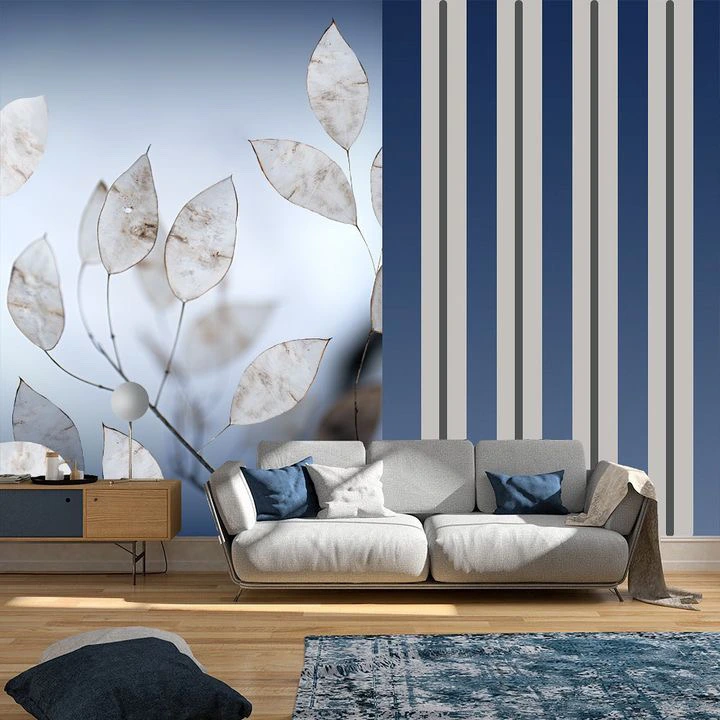
It is often observed that most renowned fashion designers emerge from Europe and America. What factors contribute to the emergence of influential fashion designers in these regions, and how do these countries nurture such talent?
The Influence of Europe and America on Fashion Design
Europe and America have a long and illustrious history in the fashion industry, serving as the epicenters of global fashion events, including prestigious showcases such as Paris Fashion Week and New York Fashion Week. Television networks and fashion magazines play pivotal roles in raising designer awareness and fostering industry knowledge.
These regions house outstanding educational institutions with experienced and well-known professors, providing continuous training and instilling the latest industry standards and technologies. European and American designers embrace innovation and uphold the highest industry standards.
Moreover, the interplay of diverse cultural influences, artistic competition, and cultural freedom to create novel designs contribute to the emergence of influential designers.
In the contemporary era, access to current information is easily attainable through the internet and online networks, ensuring that the location of a designer’s work is no longer a defining factor in their success.
In conclusion, the fashion and design landscape is dynamic and ever-evolving, demanding adaptability and an unwavering commitment to creativity.






